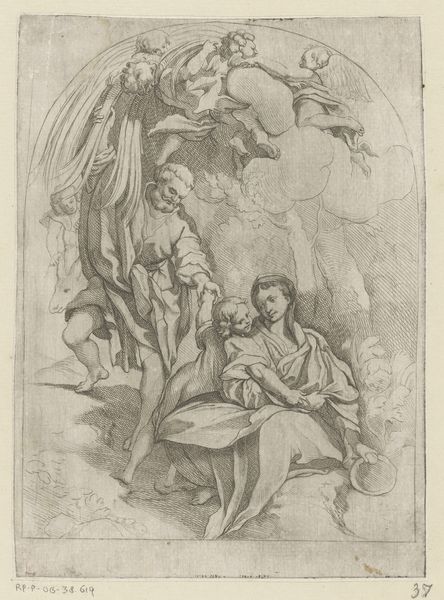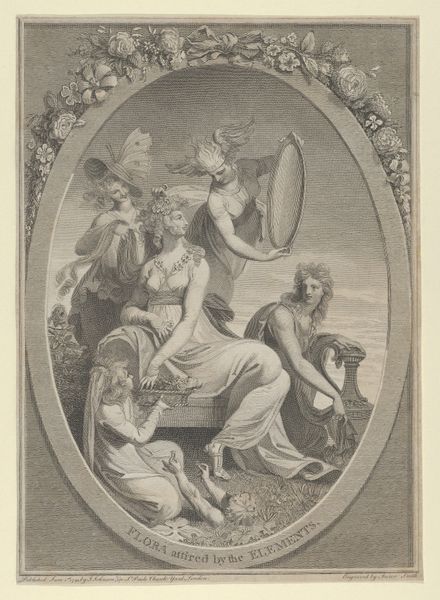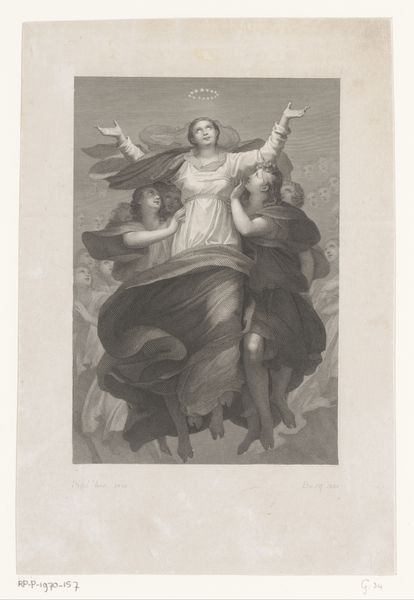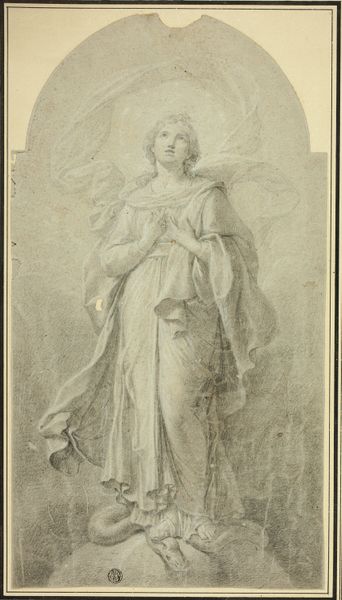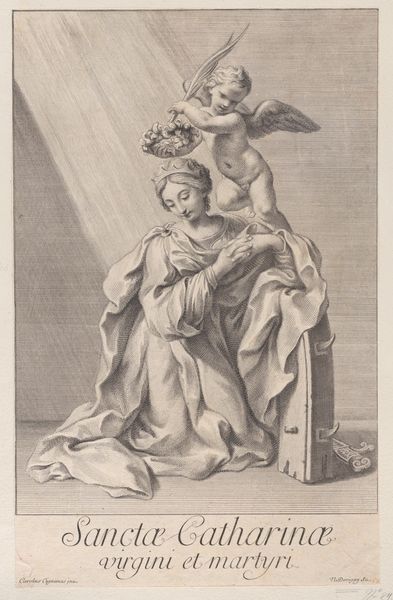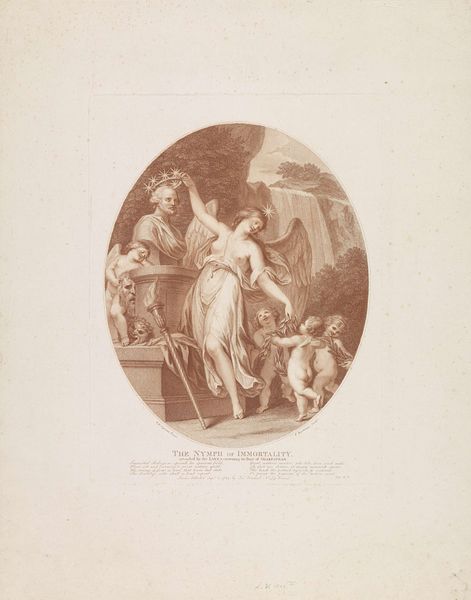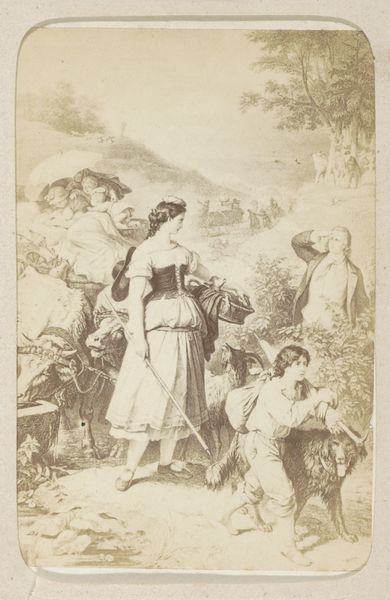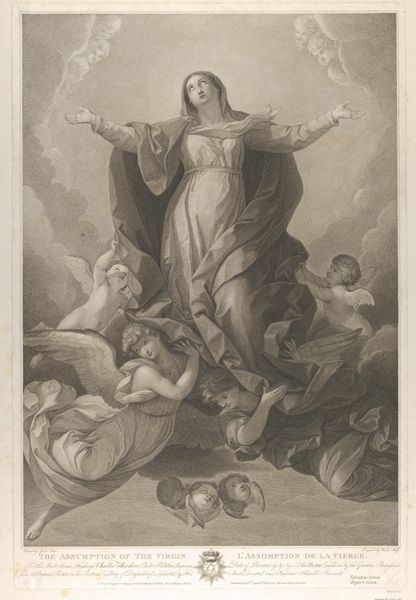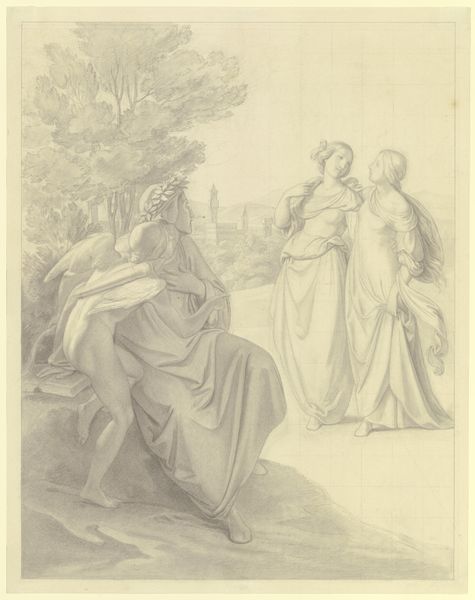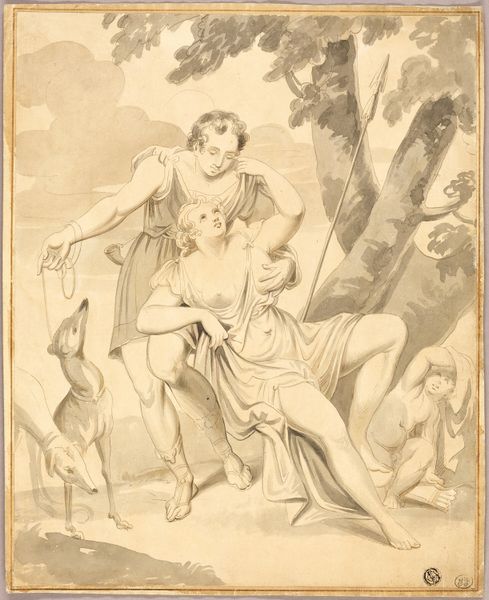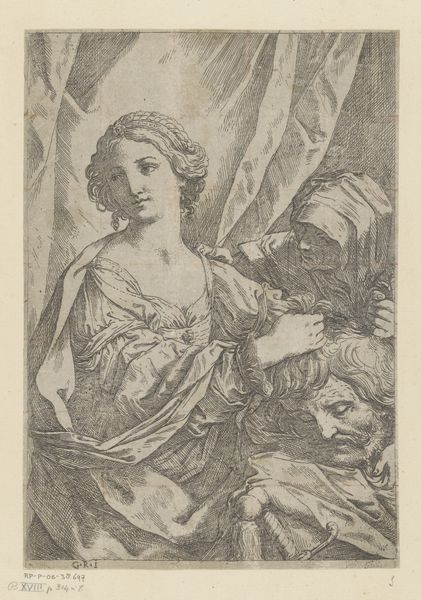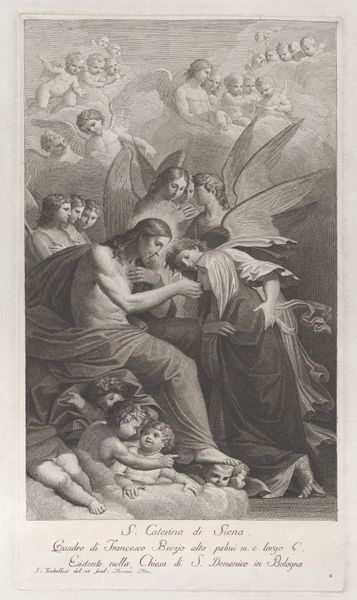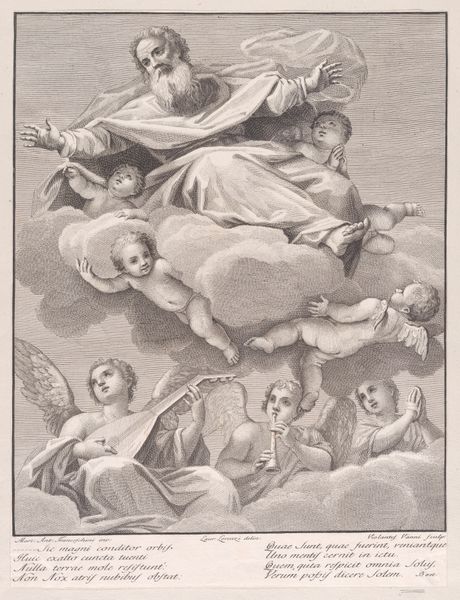
Fotoreproductie van (vermoedelijk) een prent naar werk van W. von Kaulbach: Mignon (Wilhelm Meister) c. 1860 - 1890
0:00
0:00
Dimensions: height 76 mm, width 55 mm
Copyright: Rijks Museum: Open Domain
Curator: This gelatin silver print, tentatively dated between 1860 and 1890, reproduces what is believed to be a print after a work by W. von Kaulbach, titled "Mignon (Wilhelm Meister)." It's part of the Rijksmuseum's collection. Editor: My first thought is… ethereal. There’s a distinct softness in the way the light renders the figures, creating a dreamy, almost heavenly scene. I wonder about that central figure with the wings – a curious composition. Curator: Indeed. Mignon, a character from Goethe's Wilhelm Meister, is frequently depicted with wings despite not being an angel. She embodies an innocent yet knowing spirit, an androgynous figure representing longing and unattainable beauty within the Romantic tradition. The surrounding children, their gazes fixed on her, signify her captivating influence. Editor: The fruit and vine carried in that basket… the lamb being embraced in the lower corner… these are hardly casual choices. The visual lexicon speaks strongly. It echoes the presentation of Bacchus, doesn’t it, but reframed within the more constrained and allegorical setting. Curator: Precisely. The grapes carried within the basket is evocative, suggesting both sacrifice and transformation through the Passion. The lamb symbolizes innocence and the ever-present vulnerability to an unpredictable fate. Mignon offering her song, which traditionally speaks of longing for her homeland, becomes a promise of sanctuary. Note how each subject in attendance appears entranced. Editor: Though a photographic reproduction, the attention to detail in light and shadow is remarkable, particularly in defining Mignon's wings and the children's faces. These soft contrasts guide our eyes through the symbolic narrative woven into the scene. Do you see this choice of medium amplifying or diminishing Kaulbach's message? Curator: That is precisely where meaning arises: the photograph presents the narrative at a second remove, further complicating the themes presented from Goethe’s text and Kaulbach’s allegorical interpretation. Photography’s presumed objectivity emphasizes the artifice of Romantic idealism while underlining the persistence of certain aesthetic values across mediums. Editor: Looking closer, it’s a compelling paradox: fragility captured with an enduring artistic expression. It serves as a lens for reflection beyond visual appreciation. Curator: I agree; considering the work’s structure helps to unpack both Kaulbach's visual construction of Romantic desire and its adaptation to the nascent medium of photography.
Comments
No comments
Be the first to comment and join the conversation on the ultimate creative platform.
